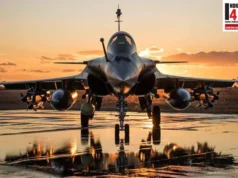India’s exports will ride global manufacturing revival
New Delhi: India’s merchandise export growth of 30.56% for November 2017, compared with a year ago, looks wonderful until you recollect that November 2016 was the month when demonetisation started.
Exports had dipped sharply then, and the very high year-on-year growth for November 2017, therefore, reflects the effect of this low base.
It’s also possible that some exports deferred in October 2017 due to goods and services tax (GST) issues happened in November, which takes off some more of the shine. The level of exports in November 2017 was lower than in September.
But that doesn’t mean we should be pessimistic about exports.
First, global manufacturing growth is accelerating. The flash Manufacturing Purchasing Managers’ Index (PMI) for December in the US was at an 11-month high; for the eurozone, at a 212-month high; for Japan, it was at a 46-month high.
The JP Morgan Global Manufacturing PMI for November 2017 was at an 80-month high.
Manufacturing worldwide is on a high.
This global manufacturing revival is good news for India’s merchandise exports. Engineering goods exports have done very well in recent months, although part of the reason could be the rise in prices of iron and steel, which are classified as “engineering goods”.
Engineering exports were up 43% year-on-year in November, and they account for almost a quarter of the country’s exports.
A word of caution here: one reason why steel exports, for instance, have been high is that domestic demand has not been strong. That is likely to change as the domestic capex cycle turns.
Is the strong rupee responsible for the tepid growth in exports?
Several economists believe the rupee is overvalued.
Prof. Vijay Joshi said in his recent L.K. Jha memorial lecture, “The question arises: Is it wise to have an appreciating real exchange rate, given the need to maintain the competitiveness of exports, especially labour-intensive exports? It is hard to think of any country that has achieved sustained rapid growth without rapid growth in its exports. But India’s exports have been growing slowly. Slow growth of world trade has obviously harmed India’s exports in the present decade, in common with other countries. But India’s share of world exports, which need not be tied to the growth of world trade, has also totally stagnated over the same period. One has to wonder whether the real exchange rate is partly responsible.”
But this is contentious territory—according to the REER computed by the Bank for International Settlements, the Indian rupee is only slightly overvalued, while the Chinese yuan is much more overvalued. Perhaps it’s best to do the hard work of improving export competitiveness rather than rely on quick fixes.
Of course, there are also headwinds to export growth. The IMF’s World Economic Outlook (chart 3) estimated that growth in the volume of goods exports from developing Asia in 2018 and 2019 will be slower than in the current year.
Disclaimer: This information has been collected through secondary research and industry4o.com is not responsible for any errors in the same.









